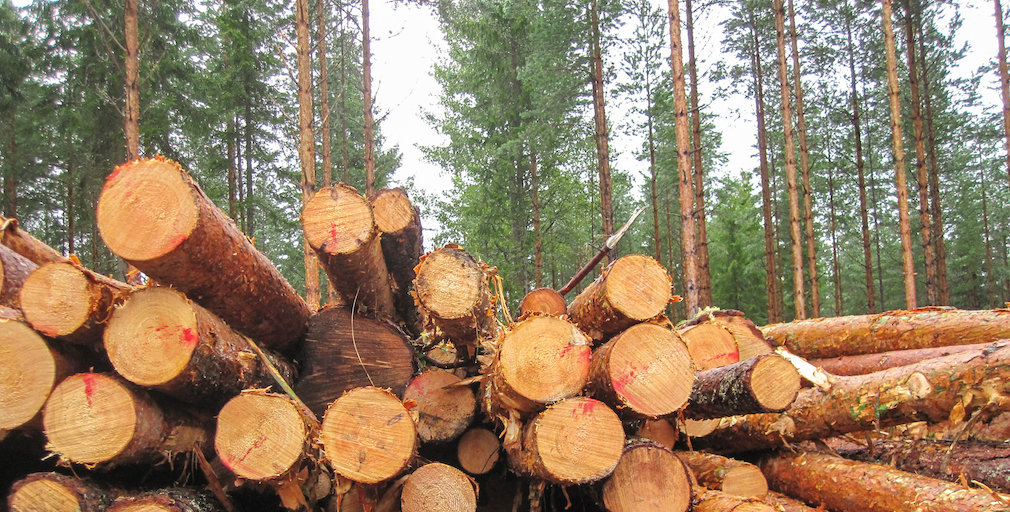The looming Canadian lumber tariffs do little to solve the actual lumber problem in America, mostly putting homebuilders and homebuyers at a greater loss, the National Associations of Home Builders explained after U.S. Secretary of Commerce Wilbur Ross announced another tariff this week.
To NAHB, the potential 30% jump in Canadian softwood lumber would jeopardize affordable housing in America. Softwood lumber is made from trees that have cones, such as spruce, pine and fir. It’s primarily used in home construction, and the U.S. is also Canada’s biggest export market.
In a follow-up interview with HousingWire, the association explained, “NAHB and its members depend on a steady, affordable supply of quality lumber to build homes.” The best way to accomplish this is a speedy and sustainable softwood lumber agreement, which to NAHB, the new tariffs don’t do.
“Absent that and as another means to address the aforementioned underlying economic problem of US demand regularly outstripping domestic supply, NAHB is advocating on Capitol Hill for policies that would increase our domestic harvest of timber thereby reducing our reliance on foreign sources of timber,” NAHB stated.
The association explained that the major problem with the Department of Commerce (DOC) solution is that it’s based on a faulty assumption that Canadian lumber is unfairly subsidized.
“The resultant protectionist action then artificially drives up the cost of lumber inputs to a range of consumer products (homes being chief among them). Again, the consumer loses,” stated NAHB.
NAHB drilled down to the main issue, stating that at the core of this dispute is the belief (on the part of the U.S. producers and sawmills) that Canada unfairly subsidizes its logging industry.
However, when broken apart, this isn’t necessarily the case. “This belief is rooted in the different systems each country uses to harvest timber. Very basically, the vast majority of timber in Canada comes from federally-owned lands. The government charges a stumpage fee to harvest these logs. In many cases this fee is set by the government and U.S. producers contend that this rate is artificially low and constitutes an unfair subsidy,” stated NAHB.
But this is a debatable point. Rather, the association stated that policies in the U.S. are in many cases as supportive, or more supportive, of lumber producers.
“For example, lumber mills using timber from public lands in Canada are responsible for building roads and replanting trees, while on public lands in the U.S. that work is paid for by the government, and ultimately, the taxpayers,” said NAHB. “Additionally, a number of U.S. states provide tax breaks or outright subsidies to lumber producers.”
The problem is that the U.S. is in an extreme deficiency of lumber and depends on lumber from Canada. NAHB crunched the numbers and found that in 2016, the U.S. consumed more than 47 billion board feet (bbf), while it produced slightly more than 32 bbf.
As a result, the U.S. heavily relies on foreign sources of lumber, and Canada makes up for 96% of this domestic shortfall.
“As such, each time we rehash this dispute, the lumber market is thrown into upheaval and the result is volatility in terms of price and supply of lumber. Sadly, the ultimate losers are the consumers of lumber products (predominately homebuilders and homebuyers),” NAHB stated.
And while Ross only proposed the tariff and plans to give a final determination on Sept. 7, according to NAHB, the tariffs are, to a large extent, already in effect.
Customs is already required to collect cash deposits as soon as the preliminary rates are announced. So, if the final U.S. International Trade Commissions’ ruling happens to be in favor of Canada, these deposits would be refunded with interest to the affected producers and exporters.
Due to this, the preliminary ruling has the same price effect it would have had it been a final ruling, and it is likely that the preliminary countervailing duties announced on April 25 should already be priced into the lumber market.
And for the additional tariff announced this week, NAHB said producers started pricing in the inevitable weeks, if not months, ago.





